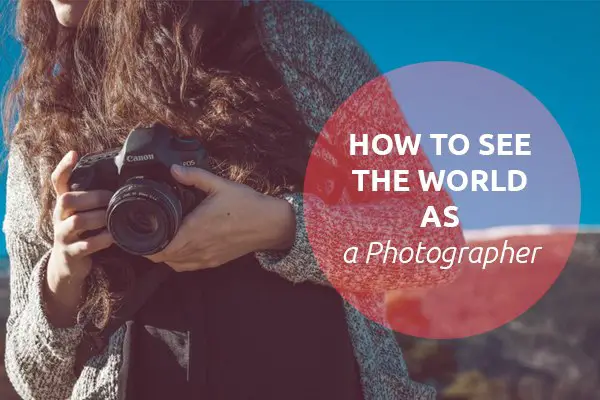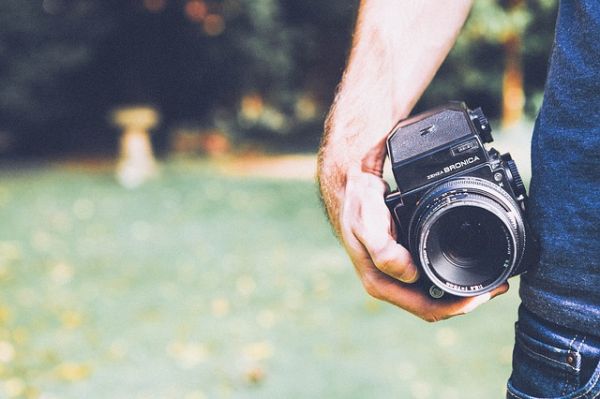How often have you seen something, a group of people having fun, a sunset or some other picturesque scenario, and snapped a photo of it, only to end up disappointed in your end result? This can be discouraging, especially if you’ve been shooting all day and expect to find a bevy of great images.

The problem is that your eyes and your camera don’t see things the same way.
When you’re looking at a scene, your mind automatically blocks out elements it doesn’t deem important. Your camera, however, is not so discriminating. When you press the shutter release, your camera records everything that makes its way into the lens.
In order to capture images that capture the emotional impact of what you see, you have to train yourself to see the world as it will appear in your camera. Doing this doesn’t have to be difficult; in fact, it can (and likely will) affect how you perceive your environment altogether. So, with that in mind, I’ve put together some things you can do to help develop your photographic vision.
Where’s That Light Coming From?
Let’s start at the beginning — photography isn’t possible without light. And not only does light illuminate whatever you’d like to take a picture of, it can change the appearance of your subject. Highlights and shadows give your subject form and shape.
So when you’re out and about, pay attention to how light plays on your environment. From what direction is the light coming? If you’re outside, where in the sky is the sun? Is it a cloudy day, or is it bright and sunny? Where are the shadows falling?

Professional studio photographs are another great source for studying light. The next time you’re flipping through a magazine, take a few minutes to study some of the ads. Magazines are usually full of bright, glossy photographs of models and products. Look at these and try to figure out where the light is coming from. Studio photographers often employ multiple lights from different angles. Trying to discern how images were created will help you gain a more instinctual understanding of light.
Framing the Subject
As you walk around throughout your day, you can look for interesting potential subjects. Once you’ve noticed your subject, though, how will you frame it? Think about different ways you can draw your imaginary viewer’s attention to your subject.
Would a shallow depth of field make your subject pop? Is your subject moving or stationary? Depending on that, what sort of shutter speed would you choose?
Another issue to consider here is how you’d keep distracting sights out of your image. While we all think of what we’d like to have in our images, what we leave out of them can be just as important.
Lines, Lines, Lines
Diagonal lines are great for adding what those in the know call “visual interest” to your photographs. They help lead the eyes of your viewers around your photos. And one of the great thing about diagonal lines is that they’re typically everywhere.
As such, looking for lines in your environment and noticing how they intersect. Once you begin to take notice of lines around you, you’ll realize just how prevalent they are. And after you become aware, incorporating them into your photos will become second nature.
Balancing Act
One of the most important elements of composition is balance. Understanding how to balance the image in your frame will greatly improve your photography game. This photo is a good example of balance. While it isn’t symmetrical, neither side of the image has more going on in it than the other.
So when you’re out and about, looking at potential photo subjects, think about how you would frame your subject so that your image is balanced.
Pattern Recognition
This one is easy. Just like the aforementioned subject of diagonal lines, patterns are everywhere. And they make for good photography material.
I bet you can guess what I’m going to say next. That’s right — start looking for patterns in the world around you. And don’t just notice the most easily recognized patterns. Look for repetition in unexpected places.
Learn the Rules So You Can Forget the Rules
Some people prefer to avoid becoming overly influenced by photography rules and guidelines. I am not one of those people. If you are, and that’s working out for you, then I’m happy. By all means, stick to what works.
But often, the best way to avoid becoming a slave to rules is to learn them so thoroughly that you don’t think about them anymore. This may seem counter-intuitive, but it works. Once you understand why the rules of composition are what they are, breaking them becomes easier.
This concept is perhaps more easily understood in terms of playing music. If you’re learning a song on the guitar, you have to practice in order to play it competently. If you practice a little, you’ll likely learn the song, but it’ll sound sloppy when you play it.
But if you practice the song over and over again until you don’t even have to think about what you’re doing when you play it, you find yourself free to experiment. Once your fingers know which notes to play without your having to think about it, your mind is free to consider other possibilities.
Get Up and Walk Around
You can’t take photos from the comfort of your couch. Well, you can, but they probably won’t turn out to be very interesting. So that means getting up on your feet and hitting the street.
And once you’re out there in the great, big world, try to find new ways of seeing it. Chances are that you encounter the same sights every day: the same buildings, the same trees, the same people, even.
These are a handful of ways you might train your eyes and your mind to see your environment as it would look in a photograph. What are your opinions? Were there any habits or steps you developed to develop your photographer’s eye? Let us know in the comments below.









Love this tutorial and is’s very helpful for the photographer.
Great article, I have learnt a lot thanks.